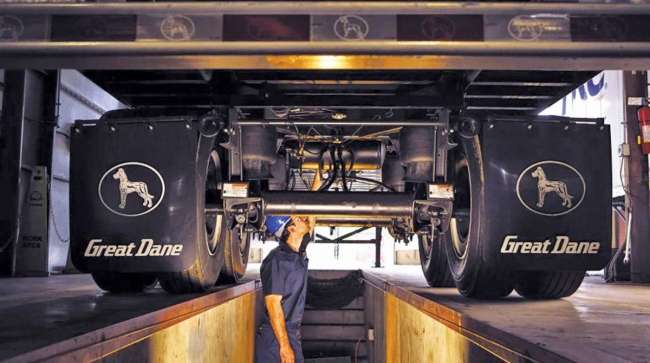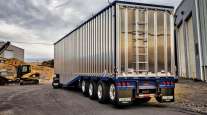Staff Reporter
March Trailer Orders Continue Year-Over-Year Declines

[Stay on top of transportation news: Get TTNews in your inbox.]
U.S. trailer orders for March declined on both an annual and monthly basis, ACT Research reported.
Preliminary net data for the month showed orders declined 19% to 13,600 units from 16,800 in the prior-year period, and fell 33.7% from the preliminary total of 20,500 units ordered in February. The seasonally adjusted total came in about the same at 13,800 units.
“Net orders remain challenged by a backdrop of weak profitability for for-hire truckers,” said Jennifer McNealy, director of commercial vehicle market research at ACT. “Anecdotal commentary from trailer manufacturers and suppliers through the past several months have indicated this slowing, as they have shared that orders are coming, but at a more tepid pace when compared to the last few years.”
The U.S. Environmental Protection Agency is set to implement tougher greenhouse gas pollution standards for heavy-duty vehicles starting with model year 2027. McNealy suspects fleets that are pre-buying power units ahead of the regulations are holding off on ordering new trailers, especially amid current weak freight market conditions.
[April State of the Industry: U.S. Trailers Preliminary Update] - Preliminary Net Trailer Orders Indicate Year of Transition Underway
Read full blog here: https://t.co/MujDaqWSs5#Trailers, #Transportation, #truck, #trucking, #ACT, #ACTResearch pic.twitter.com/s1hYc41rZU — ACT Research (@actresearch) April 17, 2024
“While we remain cautiously optimistic and don’t believe this year will be catastrophic for the trailer markets in general, we note that 2024 thus far is matching expectations as a year of transition,” McNealy said. “While some specialty segments have no available build slots until late in 2024 at the earliest, the industry’s largest segments remain under pressure.”
McNealy added that cancellations are anticipated to continue their oscillations as dealers and fleets recalibrate their inventory and immediate needs.
“The March trailer order data was again unsurprising based on the level of for-hire contract and spot rates,” said Chris Hammond, executive vice president of sales at Great Dane. “Truckers usually slow down buying when profitability sags in tough operating environments, and the past year has become more difficult for many carriers.”
Hammond anticipates that trailer orders will pick up as rates rise and business confidence for his customers improves, but he expects this shift could take several months for some fleets. Still, he noted that replacement order activity is occurring even as fleets look to cycle out older equipment and trim costs.
Want more news? Listen to today's daily briefing above or go here for more info
“There is so much excess capacity from a trailer perspective that it’s tough as far as finding new homes for trailers,” said Brandon Lairsen, vice president of trailer leasing at Transport Enterprise Leasing. “I think that the fleets that we’re talking to are still looking to shed equipment, looking to right-size their fleet. I think there are a lot of good deals to be had right now on used trailers. There are still quite a few carriers that are exiting the marketplace so that’s leaving some excess equipment available to purchase.” He added, “It’s starting to get really competitive out there.”
Lairsen noted that trailer demand was extraordinarily high following the coronavirus pandemic, which led to production of new trailers reaching record levels. But the resulting excess trailer supply that exists now is more exacerbated relative to other types of equipment since trailers have such long useful lives.
“It’s going to take awhile for us to unwind from this,” Lairsen said. “I know there are companies that are looking to export equipment out of the country just to get it out of the mix here in the U.S.”




